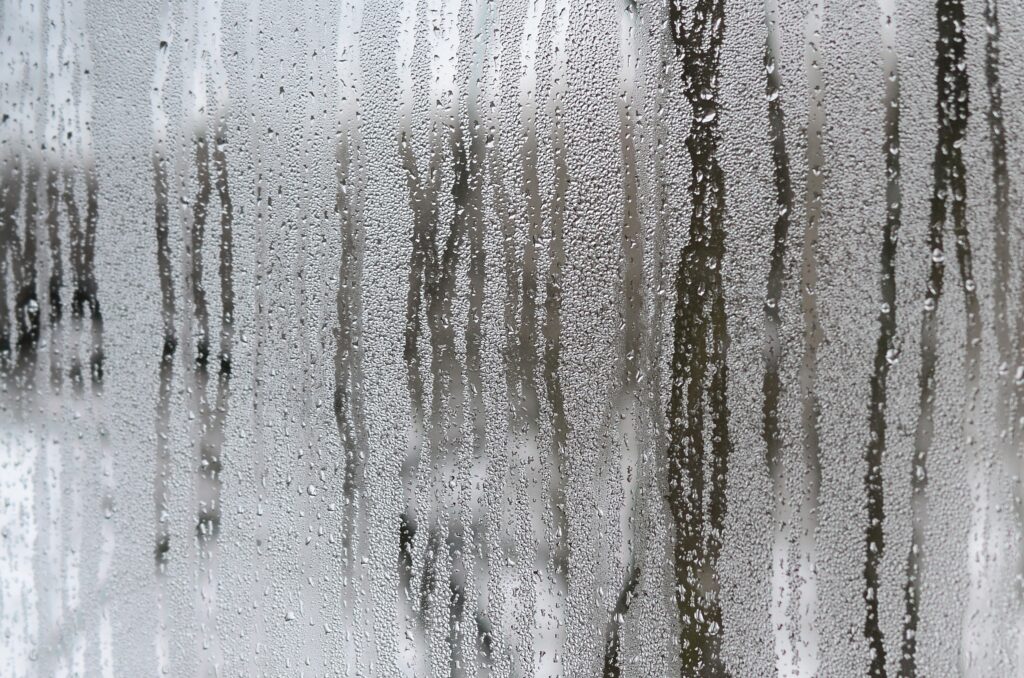Ensuring proper sealing and weatherproofing for your aluminium doors is crucial in protecting your home from the elements. By following the steps outlined in this guide, you can minimise the risk of water damage, drafts, and energy loss while also prolonging the lifespan of your doors. It’s important to understand the significance of effective weatherproofing and the potential damage that can occur if not done correctly. In this post, we’ll cover everything you need to know to adequately seal and weatherproof your aluminium doors, providing you with peace of mind and long-lasting protection for your home.
Key Takeaways:
- Choose the right sealant: Select a high-quality silicone or polyurethane sealant specifically designed for aluminium surfaces to ensure maximum protection against the elements.
- Thoroughly clean and prep the surface: Before applying the sealant, make sure to clean the surface of the aluminium door thoroughly to remove any dirt, grime, or existing sealant. Sand down any rough spots and ensure the surface is completely dry before applying the new sealant.
- Apply sealant in a continuous, even line: When applying the sealant, ensure that it is applied in a continuous, even line along the edges of the door to create a seamless barrier against moisture and drafts. Be sure to follow the manufacturer’s instructions for proper application and drying times.

Factors to Consider Before Sealing and Weatherproofing
Before you start the process of sealing and weatherproofing your aluminium doors, there are certain factors that you need to consider to ensure the maximum protection against the elements. Here are some important points to keep in mind:
- Climate and environmental conditions
- Types of seals and weatherproofing materials
- Quality of the existing door seals
- Exposure to sunlight and moisture
- Overall condition of the door frames
Perceiving these factors will help you make informed decisions when it comes to the sealing and weatherproofing of your aluminium doors, ensuring long-lasting protection.
Climate and Environmental Conditions
Before you embark on sealing and weatherproofing your aluminium doors, it’s crucial to consider the climate and environmental conditions specific to your location. If you live in an area with extreme weather conditions, such as heavy rainfall, strong winds, or high humidity, you will need to choose seals and weatherproofing materials that can withstand these challenges. By understanding the environmental factors at play, you can select the most appropriate products to provide maximum protection to your doors.
Types of Seals and Weatherproofing Materials
When it comes to sealing and weatherproofing aluminium doors, there are various types of seals and weatherproofing materials available in the market. Some of the key options include rubber gaskets, silicone sealants, and weather strips. It’s essential to choose the right type of seal and weatherproofing material based on the specific needs of your doors. The quality and durability of these materials will directly impact the effectiveness of the weatherproofing. The table below outlines the pros and cons of different types of seals and weatherproofing materials.
| Seal/Weatherproofing Material | Pros/Cons |
| Rubber Gaskets | Pros: Excellent insulation Cons: Prone to deterioration over time |
| Silicone Sealants | Pros: Durable, resistant to extreme temperatures Cons: Regular maintenance required |
| Weather Strips | Pros: Effective for sealing gaps Cons: May require professional installation |
The choice of seal and weatherproofing material will depend on your specific requirements and the prevailing environmental conditions. It’s essential to carefully assess these factors before making a decision.“`
Preparing Your Aluminium Doors for Sealing and Weatherproofing
Before you start the process of sealing and weatherproofing your aluminium doors, it’s crucial to prepare them properly. This will ensure that the sealant adheres correctly and the weatherproofing is effective in protecting your doors against the elements.
Cleaning and Inspection
The first step in preparing your aluminium doors for sealing and weatherproofing is to thoroughly clean and inspect them. Use a mild detergent or soap to wash the doors, paying special attention to any areas with built-up dirt or grime. Next, inspect the doors for any signs of damage, such as dents, scratches, or corrosion. Address any issues before proceeding with the sealing and weatherproofing process to ensure the best results.
Necessary Tools and Materials
Before you start the sealing and weatherproofing process, it’s important to gather all the necessary tools and materials. You will need a high-quality silicone sealant specifically designed for use on aluminium surfaces, as well as a caulking gun for easy application. Additionally, have a clean cloth or rag on hand for wiping away any excess sealant, as well as protective gloves to keep your hands clean and safe during the process. Having these tools and materials ready will ensure a smooth and efficient sealing and weatherproofing process for your aluminium doors.
“`
How-to Guide for Sealing and Weatherproofing Aluminium Doors
Properly sealing and weatherproofing aluminium doors is essential to protect your home from the elements. Follow these steps to ensure maximum protection for your doors.
Step-by-Step Sealing Procedures
When sealing and weatherproofing your aluminium doors, it’s important to follow a systematic approach to ensure thorough protection. Here is a step-by-step guide for sealing your doors:
| Step 1: Clean the surfaces | Step 2: Apply a primer |
| Step 3: Apply sealant to joints and edges | Step 4: Smooth out the sealant |
| Step 5: Allow the sealant to dry completely | Step 6: Apply a weatherproof topcoat |
Tips for Ensuring Maximum Weatherproofing
When weatherproofing your aluminium doors, there are several important tips to keep in mind to ensure maximum effectiveness:
- Ensure that all surfaces are clean and dry before applying any sealant or topcoat
- Use a high-quality silicone or polyurethane sealant specifically designed for outdoor use
- Inspect your doors regularly for any signs of wear and reseal as needed
Assume that properly weatherproofing your aluminium doors will require some maintenance over time, but the effort will pay off in the long run.
For more information, you can also refer to this guide on How to Seal and Insulate a Window and Door.
Maintenance and Upkeep
After properly weatherproofing your aluminium doors, How to Weatherproof Your Front Door, it’s essential to keep up with regular maintenance to ensure continued protection against the elements.
Regular Check-ups and Maintenance Tips
Regular check-ups and maintenance are vital to ensure the longevity and effectiveness of your weatherproofing efforts. You should inspect your aluminium doors at least once a year to identify any signs of wear or damage. Look for cracks, gaps, or peeling sealant that may compromise the seal. Make sure to clean the door’s surface and reapply a fresh coat of sealant as needed. Additionally, lubricate the door hinges and locks with silicone spray to prevent rust and ensure smooth operation. Any issues should be addressed promptly to prevent further damage.
Troubleshooting Common Issues
Despite your best efforts, you may still encounter some common issues with your aluminium doors. If you notice water leaks or drafts around the door, check the sealant and weatherstripping for damage or wear. Reapply sealant or replace the weatherstripping to restore the door’s weatherproof barrier. If the door is difficult to open or close, inspect the hinges and tracks for any obstructions or damage. Tighten loose screws and ensure proper alignment to resolve the issue.
FAQ
Q: Why is it important to properly seal and weatherproof aluminium doors?
A: Properly sealing and weatherproofing aluminium doors is essential to protect them from the elements, preventing water damage, rust, and deterioration. It also helps to improve energy efficiency and maintain the integrity of the door structure.
Q: What are the common weatherproofing methods for aluminium doors?
A: Common weatherproofing methods for aluminium doors include applying silicone or rubber weatherstripping, installing door sweeps, using caulking to seal gaps, and adding a protective topcoat or sealant.
Q: How often should aluminium doors be inspected and resealed?
A: It is recommended to inspect and reseal aluminium doors at least once a year, preferably before the start of the wet and windy seasons. Regular maintenance and upkeep will ensure long-lasting protection against the elements.
Q: What are the benefits of using silicone or rubber weatherstripping for aluminium doors?
A: Silicone or rubber weatherstripping creates a tight seal around the door frame, preventing drafts, moisture, and debris from entering. It also helps to improve the overall energy efficiency of the door by reducing air leakage.
Q: Can aluminium doors be repainted after weatherproofing?
A: Yes, aluminium doors can be repainted after weatherproofing. However, it is important to use a high-quality exterior paint that is specifically designed for metal surfaces. The new coat of paint will further protect the door from the elements.
Q: What should be done to maintain the weatherproofing of aluminium doors?
A: Regular cleaning and inspection of the weatherproofing components, such as weatherstripping and caulking, is essential to maintain their effectiveness. Any signs of wear or damage should be addressed promptly to prevent water infiltration.
Q: Are professional services recommended for sealing and weatherproofing aluminium doors?
A: While DIY weatherproofing methods can be effective, seeking professional services for sealing and weatherproofing aluminium doors is recommended for a comprehensive and long-lasting solution. Professional installers have the expertise and tools to ensure optimal protection against the elements.






